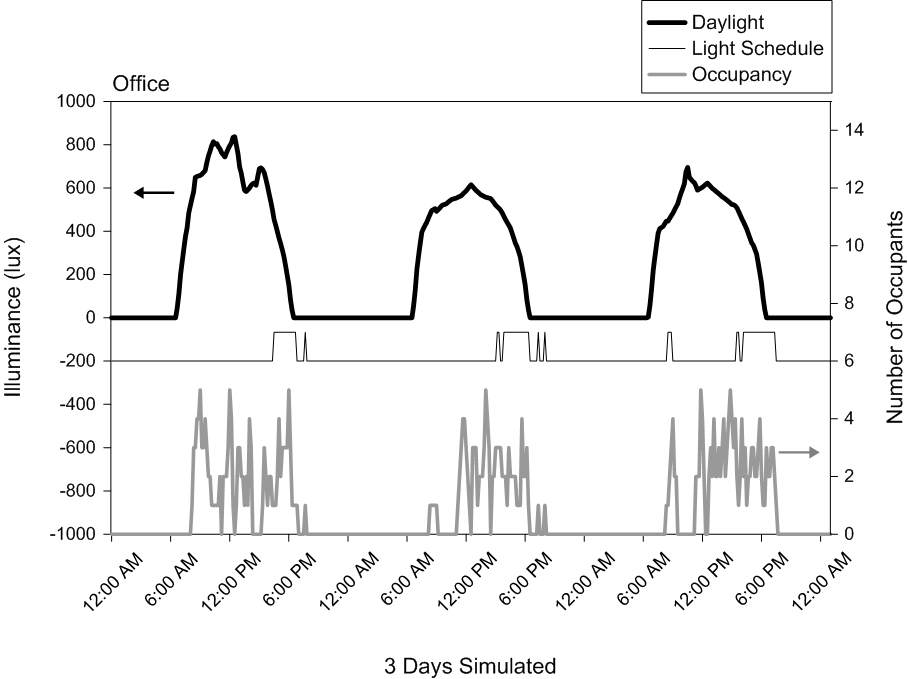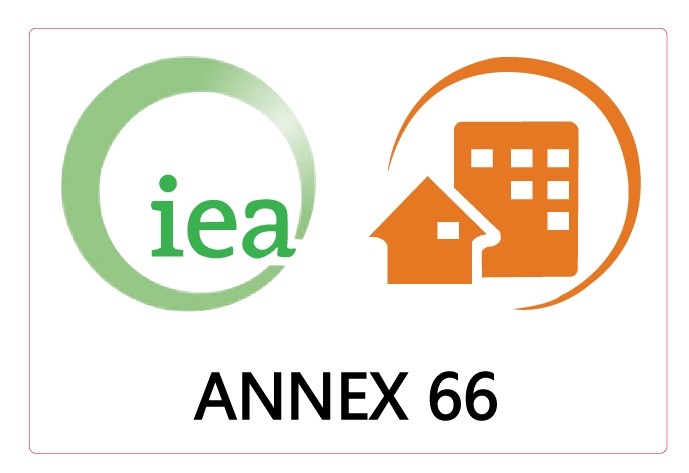OB Modeling Tool – obFMU
The OB modeling tool includes the creation of the occupant behavior FMU (obFMU) v1.0 and its co-simulation abilities with EnergyPlus v8.3.0. The components detailed in the development of the obFMU include a DNAs (drivers-needs-systems-actions) ontology, the obXML schema, and the obFMU that contains the co-simulation interface, the data model and solvers. The obFMU is the engine of the occupant behavior simulation. The results present simulation findings of different occupant behaviors (i.e. window opening, blinds closing, HVAC control). The objective of the obFMU is to simulate the occupants’ behavior at each time step based on the occupant behavior description file defined in XML format and the environmental conditions obtained through the co-simulation interface. The development of the OB modeling tool aims to improve the transparency of how occupant behavior impacts the energy consumption associated with different building systems.

FMI is a tool independent standard developed by the Information Technology for European Advancement (ITEA2) project called MODELISAR. The FMI supports model exchange and co-simulation using XML, C-code and C-header files. The obFMU co-simulation interface follows the FMI standard. The co-simulation manager initializes each obFMU through two FMI functions: fmiInstantiateSlave and fmiInitializeSlave. The fmiInstantiateSlave allocates the required memory for each obFMU instance, while the fmiInitializeSlave sets the default values for the instance. Then, the co-simulation manager performs time step simulations by calling the fmiGetReal, fmiSetReal, and fmiDoStep functions. The fmiGetReal passes data from the obFMU to the co-simulation manager, and the fmiSetReal provides data from the co-simulation manager to the obFMU. After each time step simulation, the co-simulation manager checks whether it is at the end of the simulation or not. If yes, then the fmiFreeSlaveInstance function is called to release the memory of the obFMU instance. Following the FMI standard, the relevant information for communication in the co-simulation environment is provided by the XML-file. The obFMU v1.0 requires 4 input variables (zone dry-bulb air temperature, zone daylighting illumination level, zone CO2 concentration, and zone lighting power) and generates 4 output variables (zone HVAC operation schedule, zone lighting operation schedule, zone infiltration schedule, and zone occupancy schedule).

Each obFMU instance handles the occupant behavior simulation for one zone. The co-simulation manager can create multiple obFMU instances for multi-zoned buildings. The data model requires the zone level information, such as zone floor area, zone type, zone meeting events, and so on to be defined. This is followed by information about the occupant including their behavior description. In obFMU v1.0, the lighting system, windows system, air conditioning system, and heating system are considered (Figure 6). An obXML parser is developed to obtain the occupant behavior description from the obXML file.

Example: Coupling the obFMU with EnergyPlus to model occupant behavior lighting control
Office lighting can reach 20% to 60% of an office building’s total electrical consumption. In this example, the occupant action of lighting control (turning on and off the lights) is simulated using the OB modeling tool. For turning the lights on, two contingencies are considered: (1) turning on the lights when occupants first entering the room or (2) turning on the lights when occupants feeling dark. For turning the lights off, the two scenarios considered are: (1) turning off the lights when occupants leaving the room or (2) turning off the lights when it is bright outside. In the XML schema, the child elements to interaction, from the parent action element, include different mathematical methods (i.e. constant value, linear 1D, 2D, 3D, quadratic 1D, logit1D, 2D, 3D and Weibull 1D) that define the probability of the action occurring. In this case, Weibull functions were used to determine the probability of turning the light on or off as a function of the illuminance level. The simulation results for the lighting control in an office and spanning a 3-day period, with occupancy, the lighting on/off activity and the daylighting are shown below. The results indicate that as the illuminance level increases due to natural daylighting, there is enough work plane illuminance in the office to satisfy the occupants’ visual comfort, without turning on the lights. As the outside lighting level decreases (around 6:00 pm) the lighting is switched on and off for a period of time to satisfy occupant comfort. Additionally, on days 1 and 2 a single occupant remains in the office slightly past 6:00 pm, perhaps working afterhours, and during this brief period the lights are turned on and off. The lighting schedule indicated from this simulation captures more of the stochastic nature of occupant activity on a daily basis, an improvement over conventional lighting schedules.

More Information about the obFMU can be found at:
Hong T., Sun H., Chen Y., Taylor-Lange S.C., Da Yan. An Occupant Behavior Modeling Tool for Co-Simulation. Special Issue: Advances in building energy modeling and simulation in Energy and Building, 2015. (link)

